The Color of Judge Money
By Jason Boog - jasonboog@judicialstudies.com - Posted 02-13-08
Now that the U.S. Supreme Court has sent New York Supreme Court incumbents and aspirants back to our local carnival of judicial selection, the time has come to start following the money again. And there's a lot of following to do.
In the wake of the U.S. Supreme Court’s unanimous rejection of the challenge to New York’s system for selecting judges, judicial candidates are poised to hop back on the fundraising merry-go-round.
But different jurisdictions offer different rides, at different speeds.
Last year Supreme Court candidates in the five boroughs collectively raised nearly $144,000. Yet their counterparts in the major suburban districts stockpiled almost $754,000.
These fundraising numbers might give the mistaken impression that more judges are running in the suburban races. In reality, during the 2007 election season, 12 Supreme Court spots were open in the five boroughs, while only six seats were available in the suburban districts.
Despite having double the amount of available seats, most judicial candidates in New York City barely worry about fundraising. Conversely, the suburban contests are driven by an often manic pursuit of dollars.
DEMOGRAPHY IS DESTINY
The wildly disparate sums reveal a pronounced demographic shift affecting some judicial campaigns.
Last year’s biggest judicial fundraiser in the greater metropolitan region was not found in Manhattan or Brooklyn. The top money magnet was Justice Francis A. Nicolai, a former Westchester County Court Judge who is now Administrative Judge for the Ninth District.
Nicolai raised a whopping $161,000 for a seemingly doomed candidacy. During the course of his tumultuous campaign, the judge ran with only the Democratic endorsement — unsuccessfully taking his fight for minor party endorsements to court. Click here for the Judicial Reports coverage.
Historically, candidates have depended on small party endorsements to bring crucial extra votes in close races.
And unlike many jurisdictions dominated by one of the major parties, greater competition in both the Ninth and Tenth Judicial Districts means that every last vote counts.
In the Ninth, candidates seek votes across a vast swath that includes Dutchess, Orange, Putnam, Rockland, and Westchester Counties. Judges in the Tenth must cover both Suffolk and Nassau counties.
While the Democratic Party has maintained a powerful hold over New York City, suburban voter registrations have begun tilting more Democratic in recent years.
In the Ninth, the Democrats went from some 445,000 registered voters in 2002 to more than 490,000 in 2007, while the Republicans went from slightly under 366,000 to slightly more than 367,000. The Independence Party gained 12,900 voters in that same period.
The Tenth shifted more dramatically since 2002. The Democratic Party went from just over 559,000 voters to just over 600,000 voters in 2007, and the Republicans lost roughly 31,000 voters from its total of approximately 705,000. The Independence Party gained 16,000 voters.
Click here to see a LexMetrics analysis of the shift.
Nicolai’s massive fundraising effort paid off in the Ninth. In the general election, he and two other Democrats beat the nearest Republican-endorsed contender, County Court Judge and Acting Supreme Court Justice Rory J. Bellantoni, by more than 5,000 votes. (In the contest, eight candidates vied for three seats.)
Bellantoni’s fundraising efforts weren’t quite as successful — he raised about $51,000 for his losing bid, ranking him seventh in the 2007 top fundraiser list. Justice Bellantoni has continued serving as an acting justice, and his County Court seat expires in 2013.
DEMOGRAPHICS IS ECONOMICS
Arnold Linhardt, a consultant from White Plains-based Strategic Services, has helped a few Democratic judges in recent years. He said that demographic shifts have changed the fundraising numbers.
“Has it got more expensive? I would say yes, at least on the Democratic side,” said Linhardt. “It was needed to get the message out, let people know who these candidates are. . . . On the flip side, I think Republicans are finding it harder to raise money.”
The consultant attributed the shift to a flight to the suburbs by New York City Democrats escaping high rents.
He also speculated that the shift signals the waning influence of the smaller parties. “Based on Frank Nicolai’s win, you might see candidates saying, ‘I don’t want to be held up by minor parties’, ” he concluded.
If so, it was an unintended consequence. Nicolai fought hard to overturn the small party endorsement processes after he failed to gain their support, but his ultimate victory might indicate that he needn’t have bothered.
The Board of Elections general election figures didn't illustrate that conclusion just yet.
In 2003 (a comparable ‘off-year’ without major Presidential or Legislative races to bring voters to the polls), the Independence Party delivered more than 11,000 votes countywide to cross-endorsed candidates who won the judicial race. In the 2007 race, by contrast, that party delivered 13,000 votes to Judge Bellantoni — their cross-endorsed candidate.
Frank MacKay, the national chairman of the Independence Party of America, strongly disagreed that the minor party vote was fading. “[The 2007 election] was the exception, not the rule by any means,” he explained in an interview, drawing on his previous experience as chairman of the Suffolk County Independence Party.
“Certainly in every close race in Suffolk and Nassau a so-called minor party can claim the margin of victory,” he added. “There’s nothing minor about the effect they have on judicial elections. For the most part, no one is winning these elections without the help from the Independence, Conservative, or Working Family Parties.”
TOUGH TIMES IN THE TENTH
The second biggest fundraiser of the year came from the Tenth, but his efforts didn’t pay the same dividend as Judge Nicolai’s.
Robert W. Schmidt, a Republican Associate Justice in the Appellate Division, Second Department, raised more than $110,000 for his hotly contested Supreme Court race. But he ended up losing in a Democratic sweep — with his closest opponent beating him by more than 26,000 votes.
Anthony Manetta has been a political consultant in Suffolk and Nassau Counties since 2001. He founded Roosevelt Strategy group, and has worked on a number of judicial races on Long Island.
He said candidates face an entirely new financial reality.
“If you’re going to run for Supreme Court countywide [in the Tenth], you need to come in with at the minimum $75,000,” he said. “I would recommend $125,000. The price tag has evolved. Over time things get more expensive — the costs of television ads have increased dramatically.”
He also noted that judges like Schmidt might have to dip into their own pockets next time.
“More and more what you’re seeing, especially with judicial candidates, is that many have to turn to investing in their own campaigns. You didn’t used to see that at all,” he concluded.
NEW YORK CITY IS DIFFERENT
Eight of the top 10 fundraisers of 2007 came from the Ninth and Tenth, a dynamic that has been reflected since the State Board of Elections began archiving campaign finance reports in 1999. Democratic Party dominance typically makes such dollar-dialing unnecessary in the five boroughs, and the U.S. Supreme Court’s rejection of electoral reformers’ case in Lopez Torres vs. NYS Board of Elections means that won’t change anytime soon.
The top fundraiser from the five boroughs was Robert J. Miller. The judge raised $35,000 in his bid to secure the Democratic nomination and general election for Supreme Court.
Miller secured the coveted Democratic nomination, and a cross-endorsement from the Republican and Conservative Parties. This made him the only candidate cross-endorsed by all three parties in that race where five candidates vied for three spots.
Along with the two other candidates with the Democratic endorsement, Miller’s win was virtually assured. He beat his nearest Conservative Party opponent (who lacked the Democratic and Republican endorsements) by more than 60,000 votes.
Most dramatically, only nine Supreme Court candidates from New York City even made the list of the state’s top fundraisers. The remaining spots were all secured by suburban judges forced to raise bigger pots for their elections.
Indeed, the first candidate from the five boroughs to crack the post-1999 list comes in at number 35 — Acting Supreme Court Justice Judith Gische, who raised $70,000 in multiple bids for the Supreme Court. (Most recently, she lost a judicial convention bid in 2007.)
HIGHEST JUDICIAL FUNDRAISER EVER
The prize of biggest judicial candidate fundraiser since 1999 goes to Republican Janet DiFiore, who raised more than $300,000 for her 2002 Supreme Court bid in the Ninth. She came in first place out of four winners in that race with a cross-endorsement from the Independence and Conservative Parties.
That 2002 election victory was the pinnacle of Republican power in the Ninth. Among all five counties, she collected 216,600 Republican votes that year. In contrast, no Republican won last year in that same district.
DiFiore resigned her judicial post in 2005, choosing to run for Westchester District Attorney on the Republican ticket. She narrowly won that race against the Democratic candidate, earning a nail-biting 51 percent of the vote.
Perhaps in a nod to the tectonic shift of voter demographics, DiFiore announced last year that she was changing parties to become a Democrat.
Consultant Linhardt thought that these fundraising aftershocks would lessen in a few years, particularly in the wake of Lopez Torres.
“If the U.S. Supreme Court had upheld the lower court, then you would have seen a spike in expenditures,” he said. “Since the system remains the way it is, I think we will see a leveling out in two or three years.”
The second-highest fundraiser was not so lucky. Justice Thomas A. Adams, an incumbent Associate Justice of the Appellate Division, Second Department, raised more than $278,600 for his 2006 reelection bid.
The Republican judge had received coveted cross-endorsements from the Independence and Conservative Parties, but he still lost the four-way race — losing to his closest Democratic opponent by more than 20,000 votes.
As a consultant, Manetta is frank with his clients about this hostile environment for incumbents. “The universe is so large, it’s a very expensive campaign to run. They are more competitive than ever before,” he said. “Ten years ago, all a candidate needed was the Republican line. Now the Democratic line is very competitive.”
BE SURE TO CHECK OUT www.JudicialReports.com
MLK said: "Injustice Anywhere is a Threat to Justice Everywhere"
End Corruption in the Courts!
Court employee, judge or citizen - Report Corruption in any Court Today !! As of June 15, 2016, we've received over 142,500 tips...KEEP THEM COMING !! Email: CorruptCourts@gmail.com
Most Read Stories
- Tembeckjian's Corrupt Judicial 'Ethics' Commission Out of Control
- As NY Judges' Pay Fiasco Grows, Judicial 'Ethics' Chief Enjoys Public-Paid Perks
- New York Judges Disgraced Again
- Wall Street Journal: When our Trusted Officials Lie
- Massive Attorney Conflict in Madoff Scam
- FBI Probes Threats on Federal Witnesses in New York Ethics Scandal
- Federal Judge: "But you destroyed the faith of the people in their government."
- Attorney Gives New Meaning to Oral Argument
- Wannabe Judge Attorney Writes About Ethical Dilemmas SHE Failed to Report
- 3 Judges Covered Crony's 9/11 Donation Fraud
- Former NY State Chief Court Clerk Sues Judges in Federal Court
- Concealing the Truth at the Attorney Ethics Committee
- NY Ethics Scandal Tied to International Espionage Scheme
- Westchester Surrogate's Court's Dastardly Deeds
Sunday, February 17, 2008
www.JudicialReports.com: The Color of Judge Money (MORE, CLICK HERE)
Subscribe to:
Post Comments (Atom)
Blog Archive
-
▼
2008
(545)
-
▼
February
(58)
- Westchester Judge Awaits Ethics Ruling (MORE, CLI...
- SILVER PICKS CRONY FOR 'JUDGE' PANEL (MORE, PICK ...
- Let the Corruption Clean-Up Begin- in Westchester ...
- Disbarred Greenburgh lawyer held on new charges (...
- Former 9th JD Prosecutor Must Admit to Sex with Te...
- GO GET 'EM ANDREW !!!! (MORE, CLICK HERE)
- Lawyer Busted for Counterfeiting (MORE, CLICK HERE)
- UPDATE: NY Attorney Ethics Scandal (MORE, CLICK H...
- New Chairman at Commission on Judicial Conduct Com...
- NY Lawyer Disbarred, His $35 Million House OK (MO...
- Judge Places Casual Call to Another's Chambers, Ju...
- National Spotlight on Countrywide Court Corruption...
- Judge Convicted of Sexually Assaulting Autistic Ma...
- Federal Court Hearing Reveals Another Judge Bribed...
- More Selective Action by The Commission on Judicia...
- Federal Judge Keeps Judicial Bribery Case Alive (...
- Federal Judge in Drag Quits after DUI (MORE, CLIC...
- ECC says, "Hey Ed, Are You Looking for Us?"
- Eliot's Chance to Save Himself and NY: Appoint Cou...
- More on Judge John L. Phillips (MORE, CLICK HERE)
- More News On Fagan Before His Disbarrment (MORE, ...
- FBI and IRS Pounce on Attorney Reich (MORE, CLICK...
- Attorney General Cuomo to Investigate Long Island ...
- Judge John Phillips, Dead at 82
- Confessions of a New York Court Reporter, Part I ...
- www.JudicialReports.com: The Color of Judge Money ...
- OBAMA GOT ROBBED OF NY VOTES; Election 'Fixers' Ne...
- What did law firm know about pay arrangement? (MO...
- Please, Governor, Say It Ain't So (MORE, CLICK HERE)
- FBI Subpoenas Records on Lawyer's 1,200 Days Pay i...
- One of NY's Best Lawyers to Get 3-9 years in Priso...
- Change is Good; Judge Pfau Continues Clean-Up (MO...
- Attorney Works Over 1,200 days in One Year (MORE,...
- NY: Whitewash and Coverup Captial
- Westchester Attorney Accused of Stealing Client's ...
- Judge In Ethics Trouble Over Hispanic Slur (MORE,...
- NY Judge Gets 80G Loan, Gives Lender's Bro 63G Cou...
- Forged Documents by Big NY Attorney Center of Merr...
- NY High Court to Hear UNCONSCIONABLE Fee Case (MO...
- Scariest Lawyer in the World Gets 2 Years (MORE, ...
- UPDATE: “Judge Confiscates Transcripts - Funny Bus...
- NY Judges' Groups Balk at Proposed Pay Resolution
- Judge May Face Perjury Charges
- NJ Ethics Counsel says NY Holocaust Lawyer Ed Faga...
- Lawbreaker lawmakers
- Junkets for Judges (MORE, CLICK HERE)
- Big Lawyer Has Big Problem, Charged with Launderin...
- Federal Judge on DDC Ethics Scandal: "Whistleblower"
- Spitzer Names Three Justices To Third Department B...
- More Signs of Return of Common Sense (and Integrit...
- State judges can sue for pay raise
- Two Lawyers Disbarred for Bid to Dig Up Dirt on Judge
- Lawyer Disbarred Again But Still Practicing
- 1st Department Continues Dirty Job of Correcting C...
- Lawyer Sentenced: Pawn of Corrupt Legal System, or...
- Federal Judge: "But you destroyed the faith of the...
- Our Culture of Destroying Evidence: Patentgate, th...
- Former Bx DA Warns he's a "yeller" - Tells Law Sec...
-
▼
February
(58)
See Video of Senator John L. Sampson's 1st Hearing on Court 'Ethics' Corruption
The first hearing, held in Albany on June 8, 2009 hearing is on two videos:
Video of 1st Hearing on Court 'Ethics' Corruption
The June 8, 2009 hearing is on two videos:





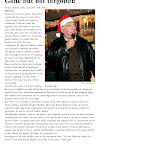

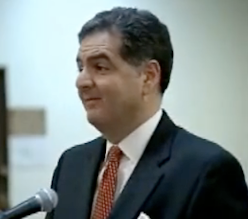
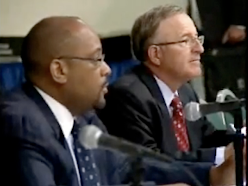
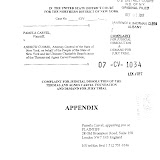
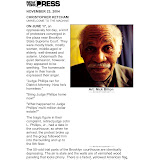

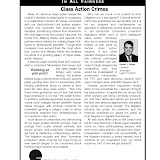

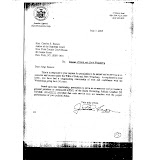
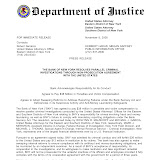
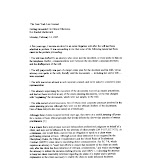
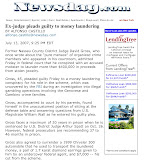
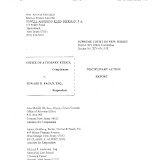
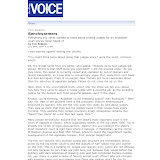
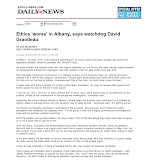
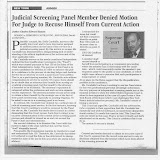

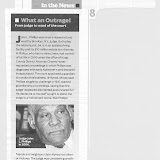
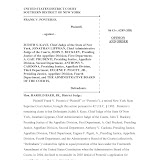
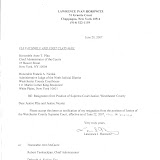
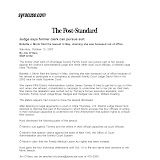
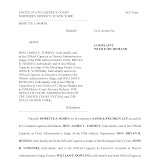

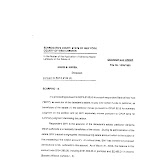
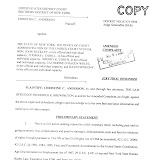
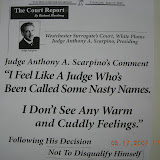
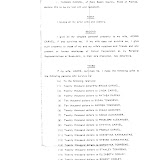
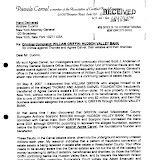
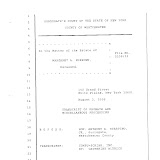
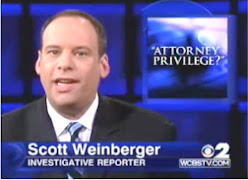
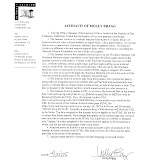
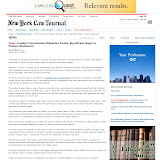
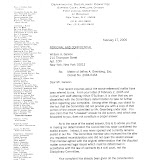
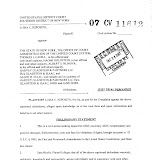
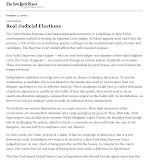
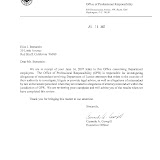
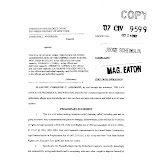
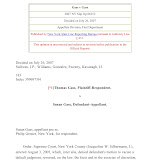
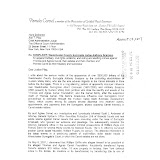

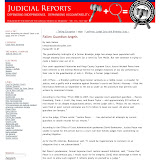
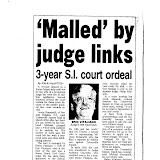
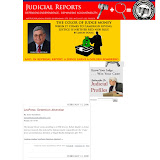
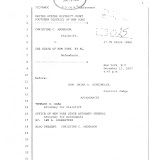
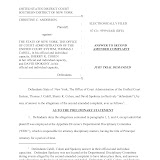
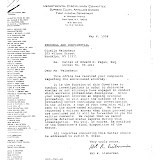
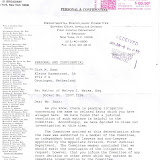
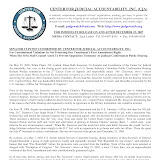
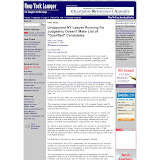
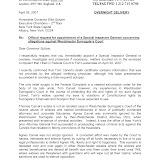
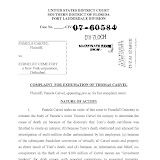
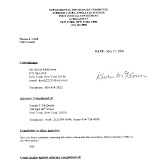
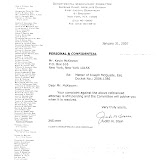
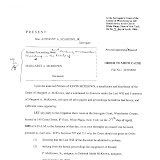
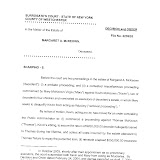
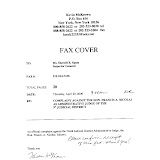
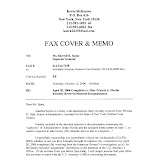
5 comments:
I'm not surprised the see jolly old Nicolai in the news again. This is a bad guy. People rightly fear this power hungry dirty bastard. When will someone stop him and the damage he does.
I know Frank, and I know Ann. It is common knowledge that Chief Administrative Judge Ann Pfau is afraid of 9th Judicial District Administrative Judge Francis Nicolai. She will not- cannot based on fear- take any needed corrective action against Nicolai and his Nixonian-style dirty tricks.
I am not from NYC but i know for a fact the above writer is on the money regarding ANN PHAU. These male- judicial-politically charged robes need more powerful men than themselves ( FEDERAL MEN) to condemn the present situation OF DISGUST at OCA. Again, ANN is a pawn for OCA and is not the savior people need to look for!
Amen to you. Ann Pfau CANNOT do anything substantial. SHE'S NOT ALLOWED.
BRING IN THE FEDS !!!!!!!!!! Yes, it's that bad.
Post a Comment